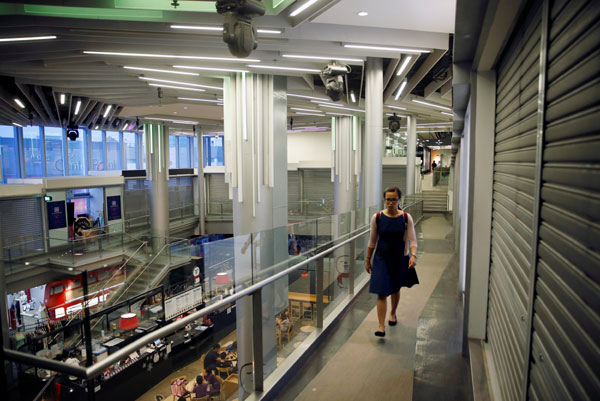Malls in international shopping haven suffer as locals, tourists curb spending
After serving only a handful of customers in five hours on a recent weekday, Sam Goh said he was worried the sportswear shop he manages, LIV ACTIV, will eventually join other brands in leaving Singapore's Orchard Road shopping boulevard.
Singapore's reputation as a shoppers' paradise, which saw investors pour $7.25 billion into retail developments here in the past five years, is taking a pummeling because of weakness in the local economy and a drop in spending by tourists. Commercial space has increased by a tenth in that period, but vacancy rates have risen to 7.3 percent from 5.0 percent and industry analysts expect them to keep rising.
"Instantly when you enter this mall you see emptiness," said the 44-year-old Goh, whose shop gave up a quarter of its space last month to cut costs.
Further down the street, cashiers play games on their phones, while some shop assistants have improvised a mini-golf game along a quiet corridor of a shopping center. Thirteen of 16 units on the 5th floor lack tenants.
Store space in places with lower foot traffic is getting few takers. For example, in a suburban area on the west side of Singapore, more than two-thirds of a basement shopping center that has been open for almost two years remains empty.
These are all signs of bets that have gone wrong: that the domestic economy would remain robust, allowing demand from this city state of 5.5 million people to stay strong, and that retail splurges by visitors from the rising middle classes in China, India and Southeast Asia would keep increasing.
No small thing
For Singapore this is not a small thing - wholesale and retail trade vies with manufacturing to be the biggest contributor to the city-state's gross domestic product and it is the biggest employer here.
But the sluggish global economy has put a brake on spending by Singaporeans, especially workers in hard-hit export sectors. Shoppers from abroad, meanwhile, spent 7 percent less in the first nine months of 2015 than they did in the same period of 2014.
Wealthy Chinese, hit by an economic slowdown, have less appetite for the luxury items they flocked to Singapore to buy during the boom years.
China also has built many of its own luxury malls and has even set up duty-free paradises in local tourist hot spots to lift consumption and spur domestic tourism.
And Indonesians, Thais and Malaysians now have cheaper versions of the same products back home. A luxury bag made by Coach can now cost twice as much in Singapore as in these countries.
In Bangkok and Jakarta, retail space has risen 20-25 percent in five years, with vacant space shrinking, data from real estate firm CBRE shows.
"Many rich Chinese used to come and spend money on luxury items and that is no longer the case and in the region you have a lot of competition," said Christine Li, director of research at commercial real estate services company Cushman & Wakefield.
"I am pessimistic about retail here," she said in reference to Singapore.
|
 A woman passes shuttered shops at a section of a mall in Singapore last month. Reuters |


















